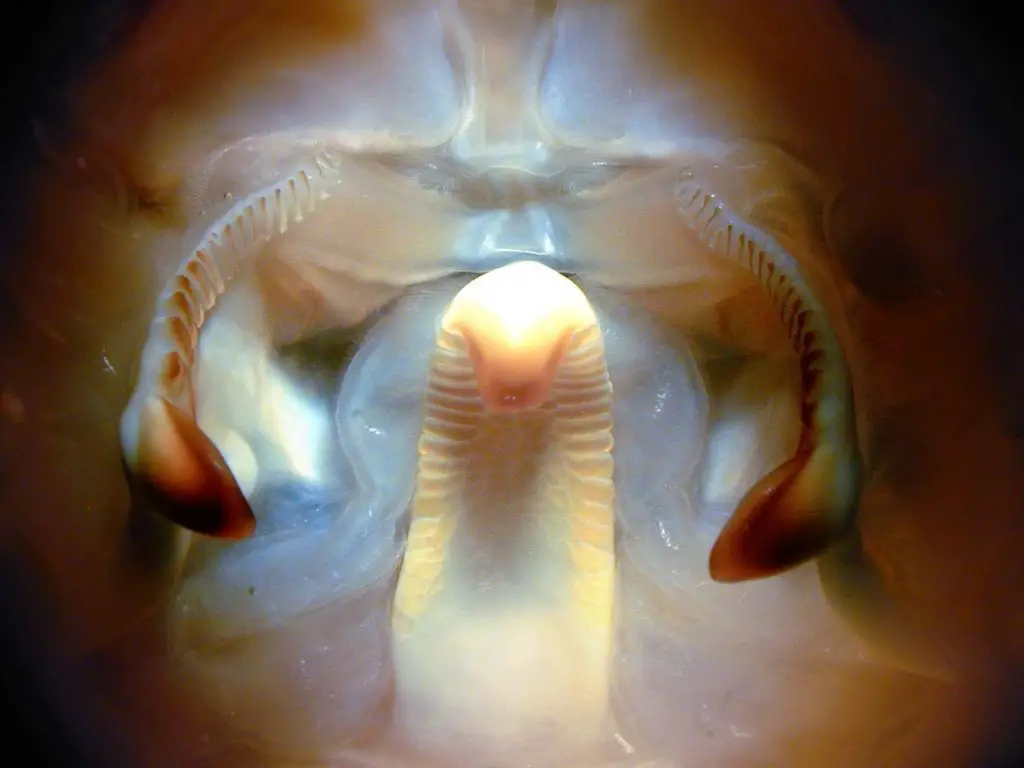Do Lobsters Have Teeth? (Explained)
When we think of lobsters eating, we always imagine them to crush their food with their claws first. However, some lobsters don’t have claws so how do they eat? Do they have teeth to crush the food instead? If you wonder whether lobsters have teeth or not, in this blog post, we’ll talk all about that. But. let’s begin with a quick answer:
Lobsters have teeth but in their stomachs, not in their mouths. They have three teeth – two lateral and one dorsal and they’re part of the structure, called gastric mill, that is used for grinding food inside the cardiac stomach.
However, this certainly doesn’t tell the whole story. Below I’ll explain more about lobsters’ teeth and their mouths. Furthermore, I’ll explain how lobsters use their mouth and teeth and what they eat. Read on!
Lobsters’ teeth
Lobsters have teeth located in their stomachs, and they’re part of the “gastric mill” structure used for grinding food. Lobsters actually have two stomachs: cardiac and pyloric. The cardiac stomach is the first one the food enters and is located right behind the mouth. This is also where the gastric mill with teeth is located.

The grinding mechanism – mill – have three opposing teeth, one dorsal located in the middle and two lateral situated on the sides. The chewing movement is created by strong muscles on the stomach wall. Furthermore, the teeth can chew food in two different modes: squeeze mode and cut-and-grind mode, which we’ll discuss more later.
Interestingly, movements of the teeth not only masticate the food but also mix the particles with the enzymes secreted by a digestive organ called hepatopancreas.
Do lobsters have mouths?
Lobsters have a mouth located below their eyes and between the antennas, called maxillipeds and mandibles. Maxillipeds are flat platelike parts that lobsters use to bring food into the mouth opening. Next, they use mandibles to crush and ingest the food.

Interestingly, lobsters don’t use their big claws to eat as many people think. In fact, it’s nearly impossible for them to pass food to their mouths using them due to the position and size of the claws. They use them only to capture and disable the prey.
How do lobsters use their teeth and mouths?
Once lobsters smell their prey with their small antennules on the front of their heads, they catch it, break it up with their claws (if that’s a lobster species with the claws), and pass it to their mouths. Once in the mouth, they grasp the food particle with their mandibles – jaw-like structures for crushing and ingesting food.
They also use their appendages, called maxillipeds, to tear the food apart and pass it to the mouth. The whole process takes about 4-5 seconds. Next, the food passes to the esophagus – a short, thick-walled duct that connects the mouth with the stomach.
Next, it goes to the first stomach – cardiac, where the gastric mill structure is located. Three teeth, two lateral and one dorsal, grind and sort food particles. As I mentioned, the teeth can chew in two modes: squeeze mode and the cut-and-grind mode.
During the squeeze mode, only the cusps of the three teeth move together simultaneously. In the cut-and-grind mode, two lateral teeth close first together with their cusps and also with their serrated edges. After this cutting phase, the lateral teeth grind rearward along the medial tooth file while moving forward.
After that, the food passes to the pyloric stomach, which is sorted and strained and then directed back to the gastric mill. Food is then masticated and mixed with digestive enzymes. Next, the particles pass into the midgut glands, where they’re further digested.
Furthermore, material too large to be absorbed is passed into the hindgut. Then, it goes through the enlarged rectum and it’s expelled through the anus at the tip of the lobster’s tail.
What do lobsters eat?
Lobsters are omnivorous, which means they eat both plants and animals. Their diets may vary depending on the species, but in general, they consume mussels, sea urchins, shrimp, worms, carrion, algae, mollusks, and crustacean, sometimes even including other lobsters.
Interestingly, lobsters also eat their own shells after they recently molted to grow larger. It’s a great way for them to speed up the hardening of the new shell as that shell is full of important nutrients like calcium.
Lobsters are nocturnal animals, meaning they mostly hunt at night. During the day, they like hiding in rocky crevices or in coral reefs.
You may also like:

Welcome to Bubbly Diver!
I’m glad to see you here. This blog is created for all marine creature lovers by a bubbly diver - me, Dori :)


